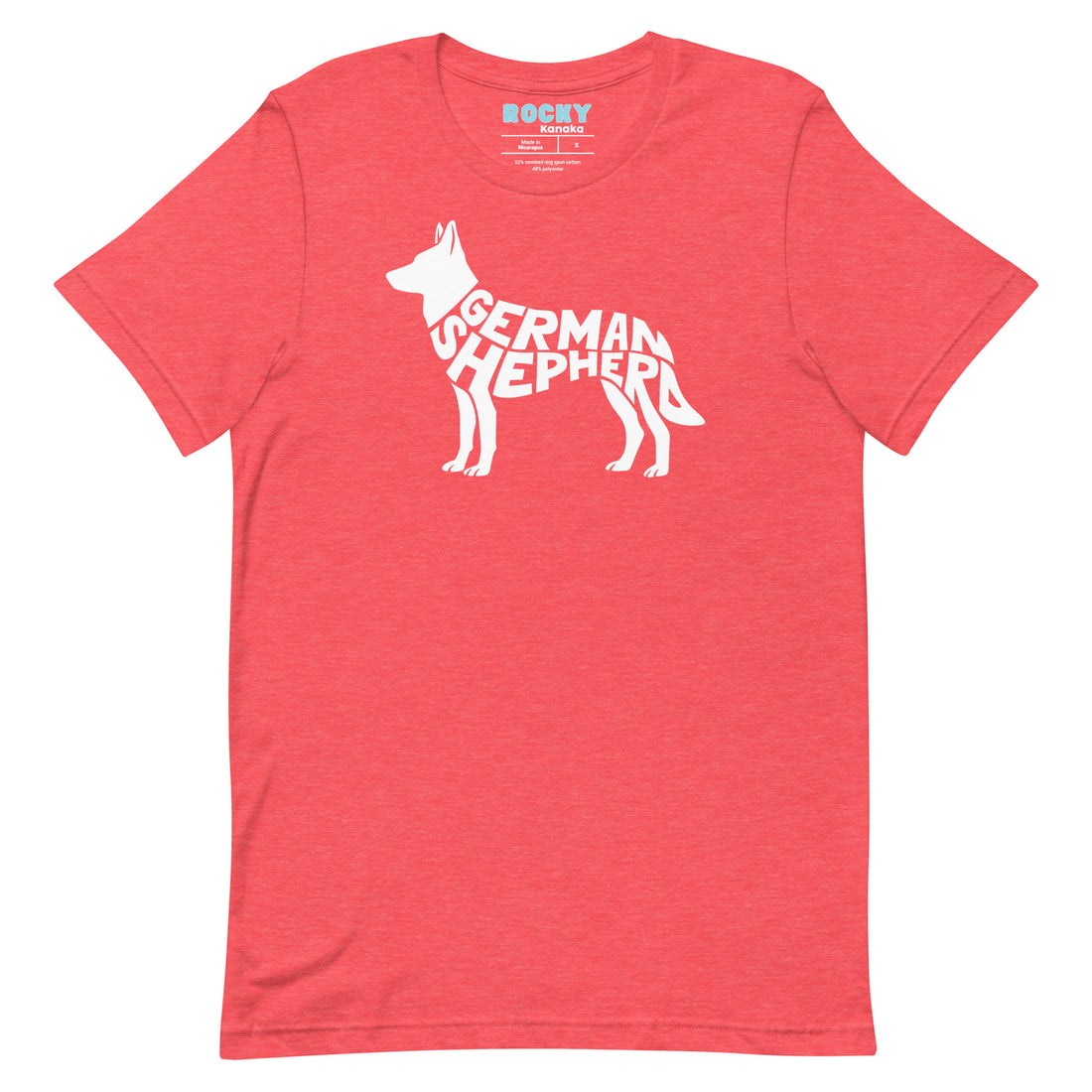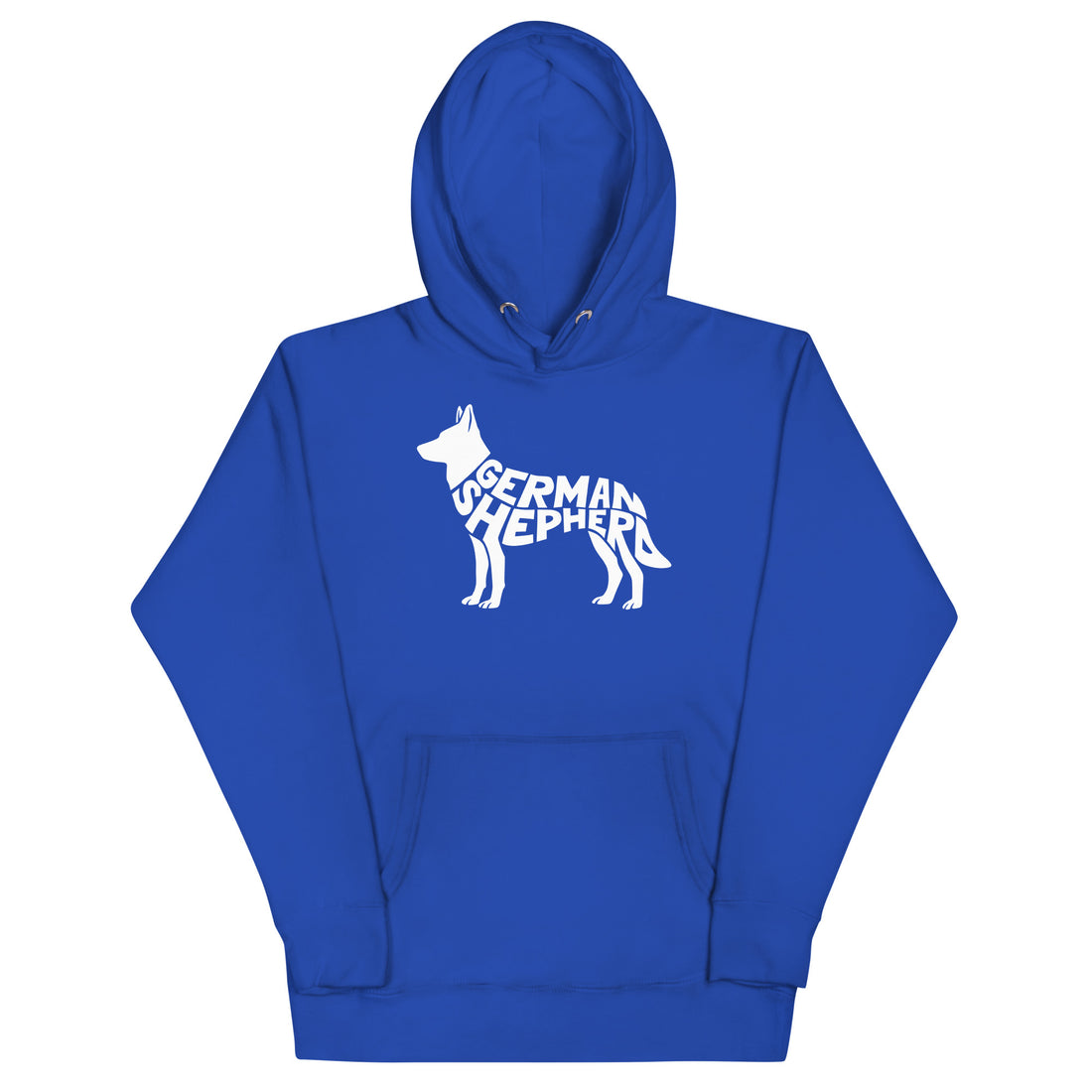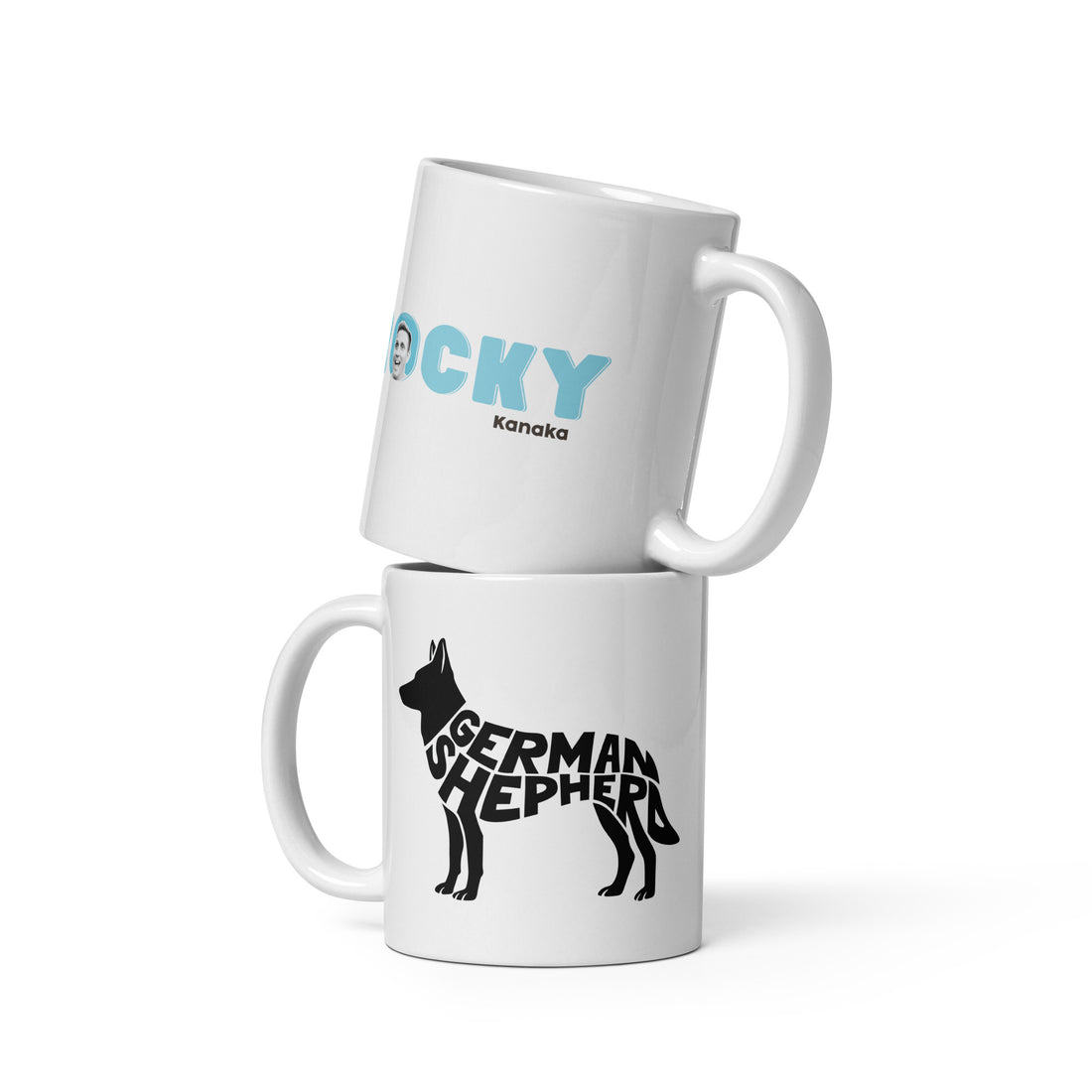In the World of German Shepherds, Blue is the New Black
One of the most popular breeds in the U.S., the German Shepherd Dog is an easily recognizable breed, one that even most kids can quickly identify. Best known for their distinct tan/red and black markings, many enthusiasts of the German Shepherd don’t know that it actually comes in more than ten colors.
Of the standard German Shepherd color variations, blue is one of the rarest and most unusual. A deep, steely gray tone, blue German Shepherds carry a pair of “dilution” genes that make the fur that would ordinarily be black just a touch lighter. Blue German Shepherds have blue fur, and blue noses, which distinguishes them from regular gray GSDs.
Top 4 Biologically Appropriate Dog Foods for German Shepherds
Absolutely stunning dogs with truly regal looks, blue German Shepherds are highly sought after in some circles, and you’ll see exactly why when you take a look at these blue beauties.
Get To Know 5 Blue German Shepherds
Blue German Shepherds aren’t a bright “Blue’s Clues” blue, but instead look more steel blue/gray. Blue is a standard, accepted color for the breed according to most kennel clubs, and can also appear in bi-colored GSDs like blue and tan. Let’s meet five blue German Shepherds whose humans have created Instagram accounts dedicated to their beloved dogs.
1. Sheiva & Zakara
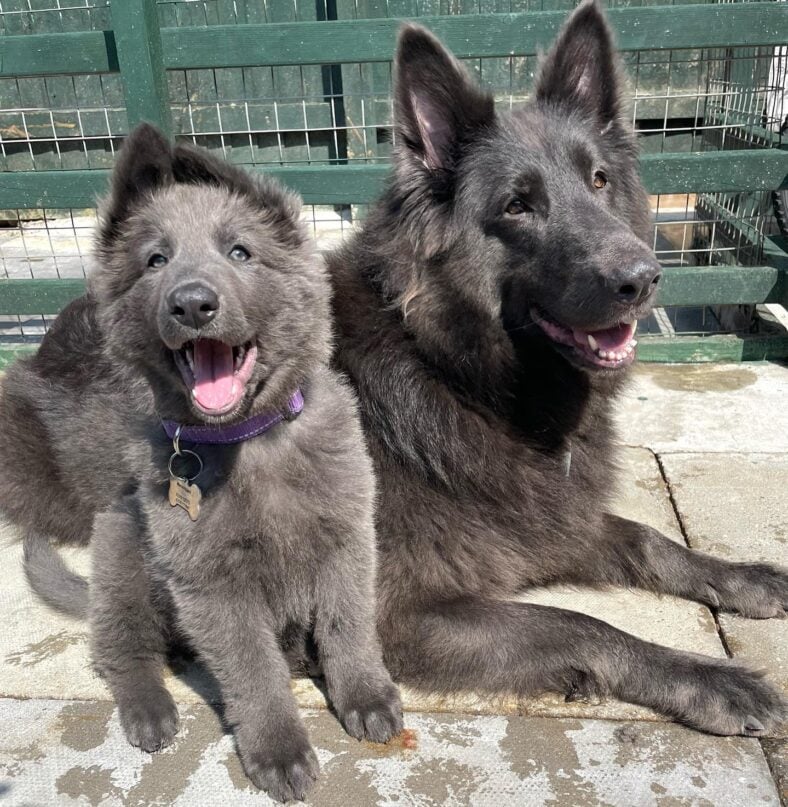
This adorable mother-daughter-duo is Sheiva (right) and Zakara (left). Both stunning solid blue German Shepherds, these stunning ladies live in the UK with a black and tan German Shepherd called Zyla who they love to spend all day with, outside, romping in the grass!
2. Rogue
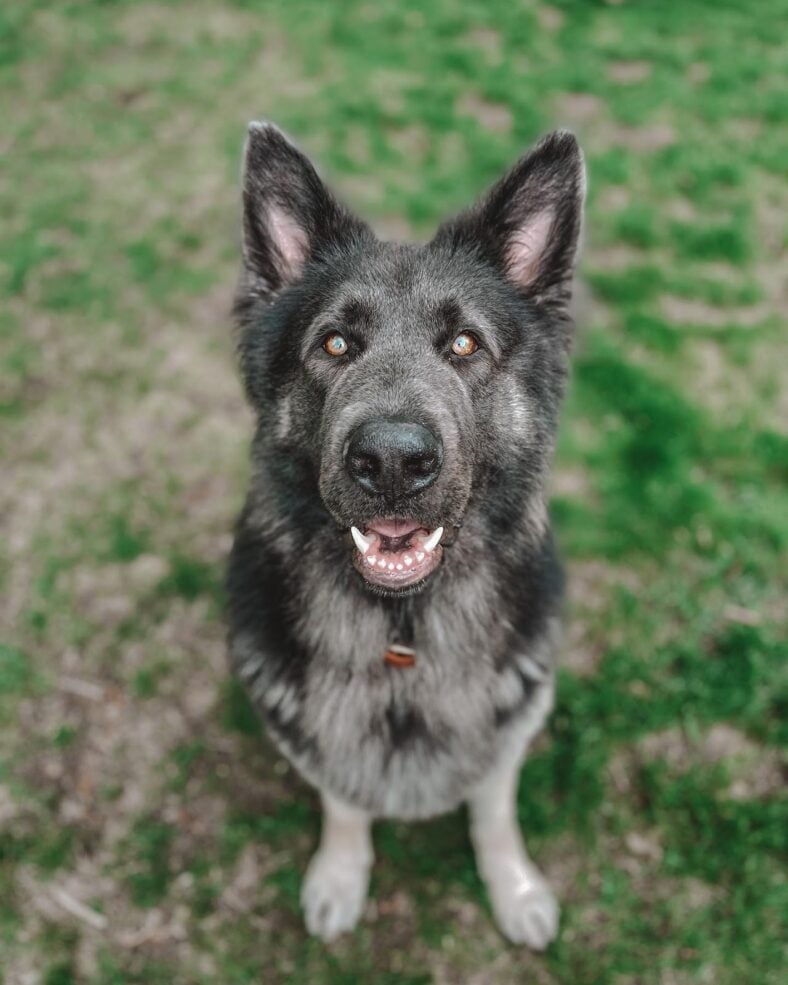
Rogue is a stunning blue sable German Shepherd whose guard hairs are a light fawn, almost Isabella-gray tone. This lovely three-year-old blue GSD is a typical German Shepherd who loves to be outside in rain, sunshine, or snow.
3. River
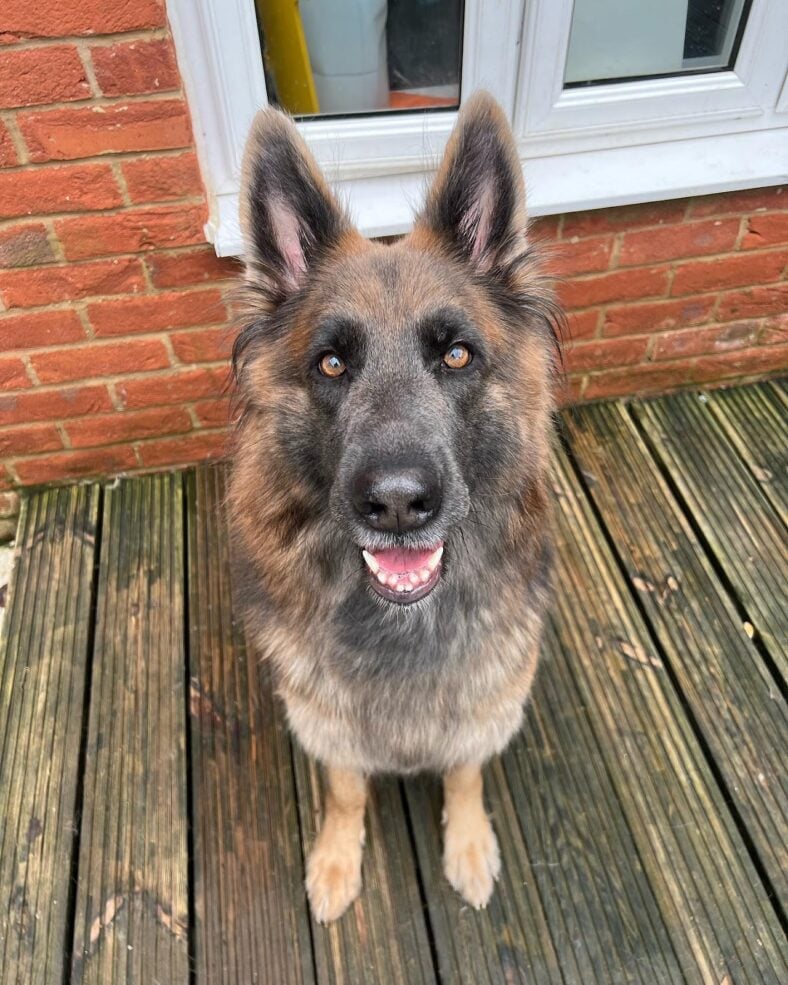
River is a beautiful blue and tan German Shepherd with typical GSD patterning that replaces the usual black with blue! River is four years old, loves to play with her canine siblings, and is super attentive to her humans.
4. Jäger
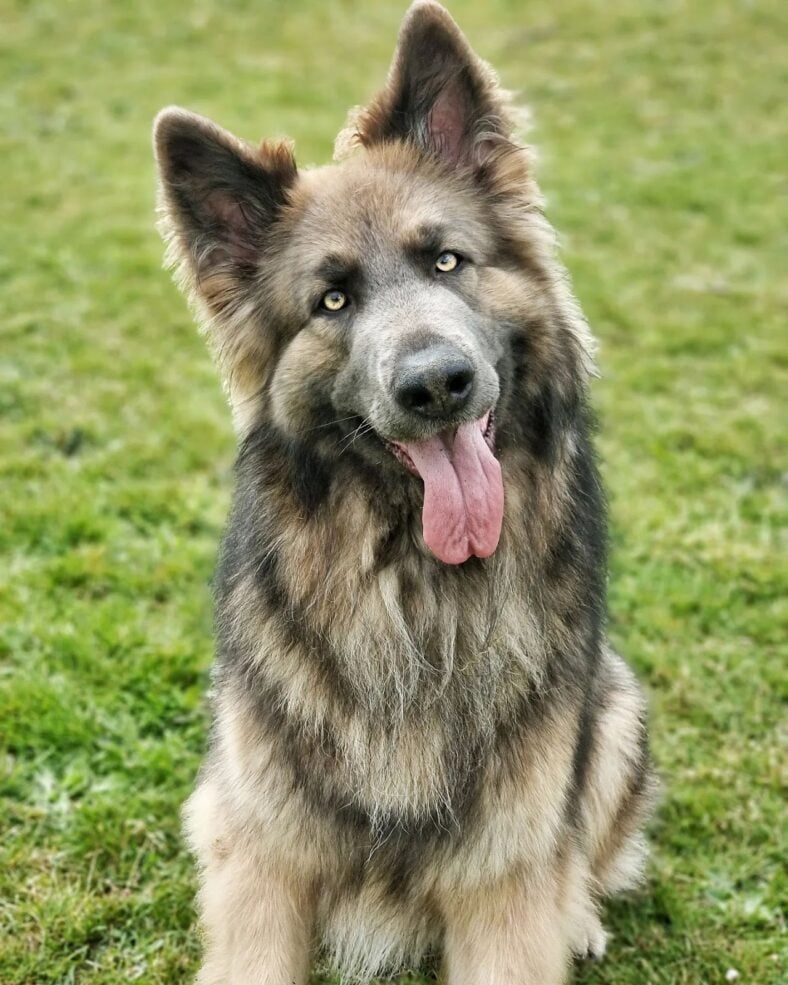
Handsome Jäger from South Wales is a long-coat blue and tan German Shepherd whose favorite things include his human child, eating tasty treats, and playing on the beach!
5. Harbor
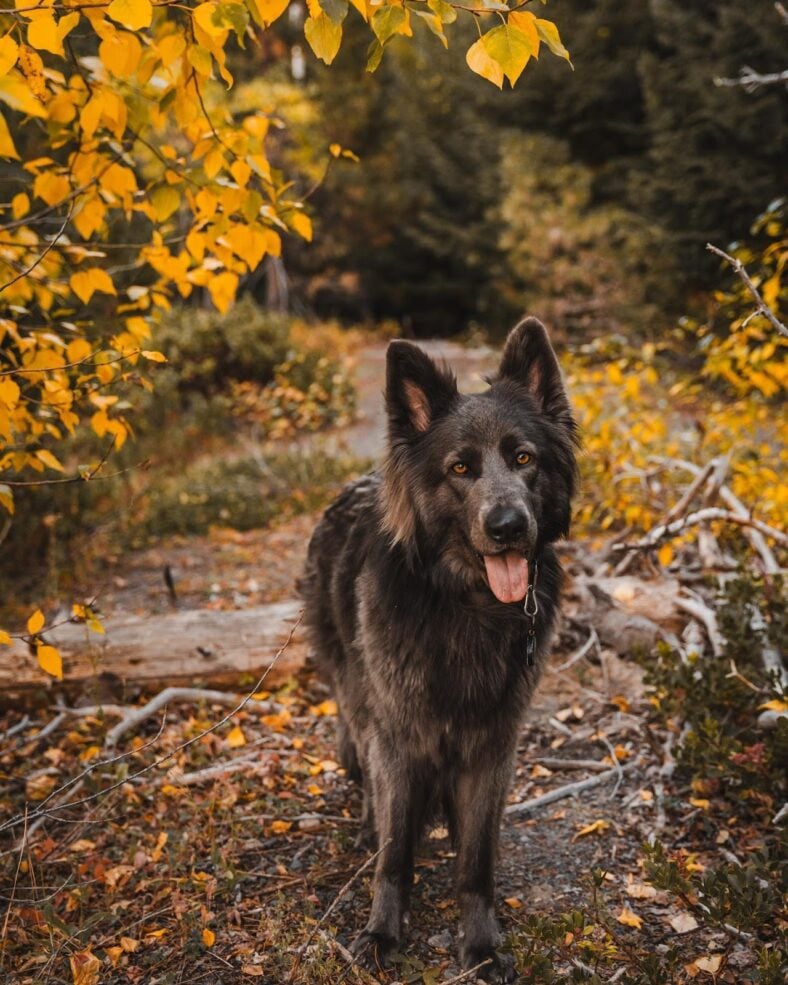
Harbor is a blue German Shepherd living van life with her canine brother Canyon and her humans! Traveling around the country with all of her best friends is total paradise for Harbor, and she has gotten to explore the great outdoors at every stop.
Blue German Shepherd Basic Info
German Shepherd temperament, size, health, etc. isn’t impacted by color. Blue German Shepherds have all the same qualities as their black and tan counterparts, they just look a little different. Here’s a quick overview of what life is like with a German Shepherd, and where you can find a blue GSD of your own.
Is A Raw Food Diet for Your German Shepherd The Key to Optimal Health?
Blue German Shepherd Temperament
German Shepherd Dogs are loyal, intelligent, brave, and eager to please their humans, making them excellent working dogs and athletes. Both mentally and physically active, German Shepherds love to learn tasks and are easy to train as long as you are willing to dedicate your time, focus, and energy.
Because of their intelligence, some German Shepherds can become easily bored which may lead to compulsive or destructive behavior. Though they are deeply attached to their humans, German Shepherds are also known to be aloof and independent and may prefer to be near their humans vs. snuggling with them on the couch.
German Shepherds are a high-demand breed for many reasons, including their incredible energy and athleticism. This is not a breed for new dog owners. Many GSDs also have high prey drive and do not do well with cats, small animals, or energetic small children.
Blue German Shepherd Size
German Shepherds are large dogs that stand between 22–26 inches tall and weigh around 50–90 pounds.
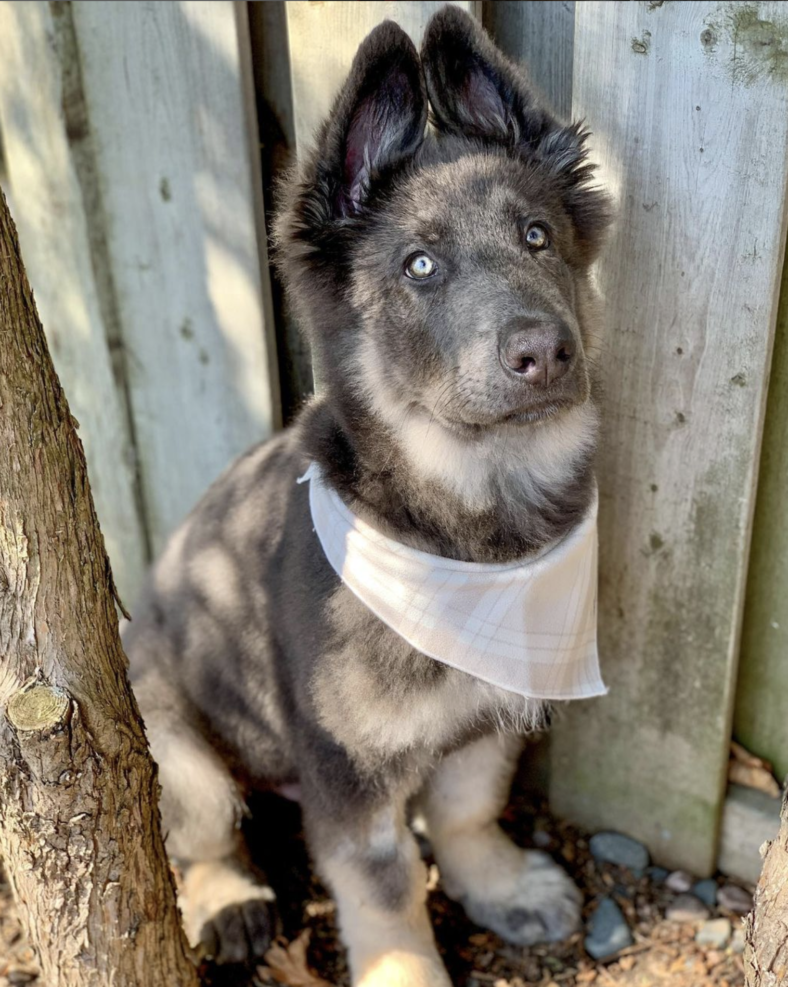
Blue German Shepherd Health
German Shepherds are relatively healthy dogs, especially when purchased from an ethical breeder who has done the appropriate health and genetic screenings. The most severe and most common health issues German Shepherds experience are joint problems like hip and elbow dysplasia and patellar luxation.
A few other health issues to be aware of with German Shepherds include:
- Bloat
- Degenerative myelopathy (a chronic spinal condition)
- Allergies
- Epilepsy
- Diabetes
Where To Find a Blue German Shepherd for Sale
If you plan to buy a blue German Shepherd from a breeder, we recommend starting on the American Kennel Club’s marketplace where you’ll find ethically bred, AKC registerable puppies. Adopting a German Shepherd is also a great way to find your new best friend—check out some of these resources for finding adoptable GSDs in need of a new home.
- American German Shepherd Rescue Association-affiliated rescues
- Petfinder
Blue German Shepherd FAQ
Don’t scroll away just yet! We’re answering a handful of burning questions from dog lovers who are curious about the blue German Shepherd.
What is the difference between a blue GSD and a silver GSD?
Blue is a dark, blue-toned gray, and is technically a diluted version of black. Silver on the other hand is a cool-toned white shade. While you can find German Shepherds that are solid blue, silver German Shepherds are typically silver and black, which is an AKC-recognized coloring for this breed. Here’s a side-by-side of a blue German Shepherd (left) and a silver and black German Shepherd (right).
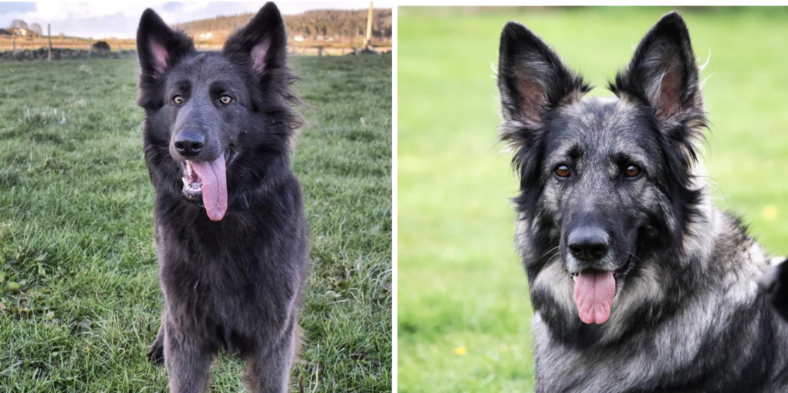
Sources: @GemstonSkies and @SilverSun.AS
If you look closely at these two dogs’ undertones, you’ll notice the dog on the left is almost a steel-blue German Shepherd while the dog on the right has black fur with silvery-white patches.
The colors you’re looking at are the ones that can be shown in dog shows. Blue German Shepherds can be AKC registered but cannot be shown in the ring.
Do German Shepherds come in merle?
No. German Shepherds do not naturally carry a merle gene, and only GSD mixes can be merle. Although there is no such thing as blue merle, blue German Shepherds can be bi-colored or sable.
What other colors can German Shepherds be?
German Shepherds come in more than 10 color variations including the classic black and tan, solid black, liver, black and silver, black and red, and white. Blue German Shepherds are also a standard coloration but are considered relatively uncommon.
How much is a blue German Shepherd worth?
Blue German Shepherds typically sell for around $1,200–$2,000. Blue German Shepherds are not exactly rare, but they are relatively uncommon, and not many breeders focus on this color variant of the breed.
Can purebred German Shepherds have blue eyes?
Yes, but blue eyes are considered a breed fault. German Shepherd breeders do not purposefully try to produce blue-eyed GSDs, and in fact, may work to eliminate this genetic trait from their bloodlines.
What is a blue German Shepherd?
A blue German Shepherd is a purebred German Shepherd dog that has a unique dilute coat color. Rather than the typical black and tan pattern, blue German Shepherds have varying shades of gray, blue, or silver fur. Their eyes also have a striking light blue or amber hue. The blue color is caused by a recessive gene that reduces the black pigmentation of the fur.
Are blue German Shepherds recognized by the AKC?
No, blue German Shepherds are not recognized by the American Kennel Club (AKC) as a standard color variation of the breed. The AKC only accepts black and tan, black and red, black and silver, black and cream, sable, black, and white as acceptable colors for German Shepherds. Blue German Shepherds are considered a serious fault. White dogs are disqualified from AKC competition. Blue German shepherds can still be registered with the AKC, but they are only eligible for performance events, such as agility, obedience, and herding. They can also participate in other activities, such as therapy, service, and companionship.
The AKC’s reasoning for not accepting blue German Shepherds is that the blue color is caused by a recessive gene mutation that can also lead to health problems, such as hip dysplasia and eye defects.
-Some people believe that the AKC’s breed standard is necessary to maintain the health and quality of the German Shepherd breed. They argue that the blue color is a sign of poor breeding and that blue German Shepherds are more likely to have health problems.
-Others believe that the AKC’s breed standard is outdated and discriminatory. They argue that blue German Shepherds are just as healthy and capable as other German Shepherds, and that they should be allowed to compete in AKC events.

How rare are blue German Shepherds?
Blue German Shepherds are very rare, as they only occur when both parents carry the recessive dilute gene and pass it on to their offspring. The chances of this happening are about 25% for each puppy in a litter. Because of their rarity and unique appearance, some breeders may charge higher prices for blue German Shepherds, ranging from $1,500 to $2,500.
Do blue German Shepherds have any health issues?
Blue German Shepherds are prone to the same health issues as standard German Shepherds, such as hip and elbow dysplasia, degenerative myelopathy, bloat, and some heart conditions. They may also have a higher risk of skin problems and allergies due to their diluted coat color. It is important to find a reputable breeder who tests their dogs for genetic diseases and provides health certificates.
How do I care for a blue German Shepherd?
Blue German Shepherds require the same care as standard German Shepherds. They need regular grooming to keep their double coat clean and healthy. They shed moderately throughout the year and heavily twice a year during seasonal changes. They should be brushed at least once a week and bathed when necessary. They also need plenty of exercise and mental stimulation to keep them happy and fit. They should get at least 60 to 90 minutes of physical activity daily, as well as training and enrichment activities.
How do I train a blue German Shepherd?
Blue German Shepherds are highly intelligent and trainable dogs that excel in many fields such as obedience, agility, tracking, herding, protection, and service work. They respond well to positive reinforcement methods that reward them for good behavior and discourage bad habits. They need early socialization to expose them to different people, animals, and situations and prevent them from becoming shy or aggressive. They also need consistent leadership and clear rules to follow.
Are blue German Shepherds good family dogs?
Blue German Shepherds can make excellent family dogs if they are raised with love and respect. They are loyal, protective, and affectionate with their owners and can get along well with children and other pets if properly socialized. However, they are not suitable for everyone, as they require a lot of time, attention, and commitment to train and exercise them. They are also not recommended for first-time owners or those who live in small apartments or have busy lifestyles.
Where can I find more information about German Shepherds
-German Shepherd Club of America: https://www.gsdca.org/
-International German Shepherd Society: https://www.wusv.org/en/world-union
-German Shepherd Association of North America: https://www.gsdca.org/
-German Shepherd Club of Canada: https://www.gsdcc.ca/
-German Shepherd Club of Australia: https://www.wgsdca.org.au
Related Articles:
- Fluffy German Shepherds Have a Secret Recessive Gene That Gives Them Amazing Fur
- Top 4 Biologically Appropriate Dog Foods for German Shepherds
- How Much Exercise Do German Shepherds Need to Thrive?
- Is A Raw Food Diet for Your German Shepherd The Key to Optimal Health?
- German Shepherd + Poodle = Shepadoodle!


